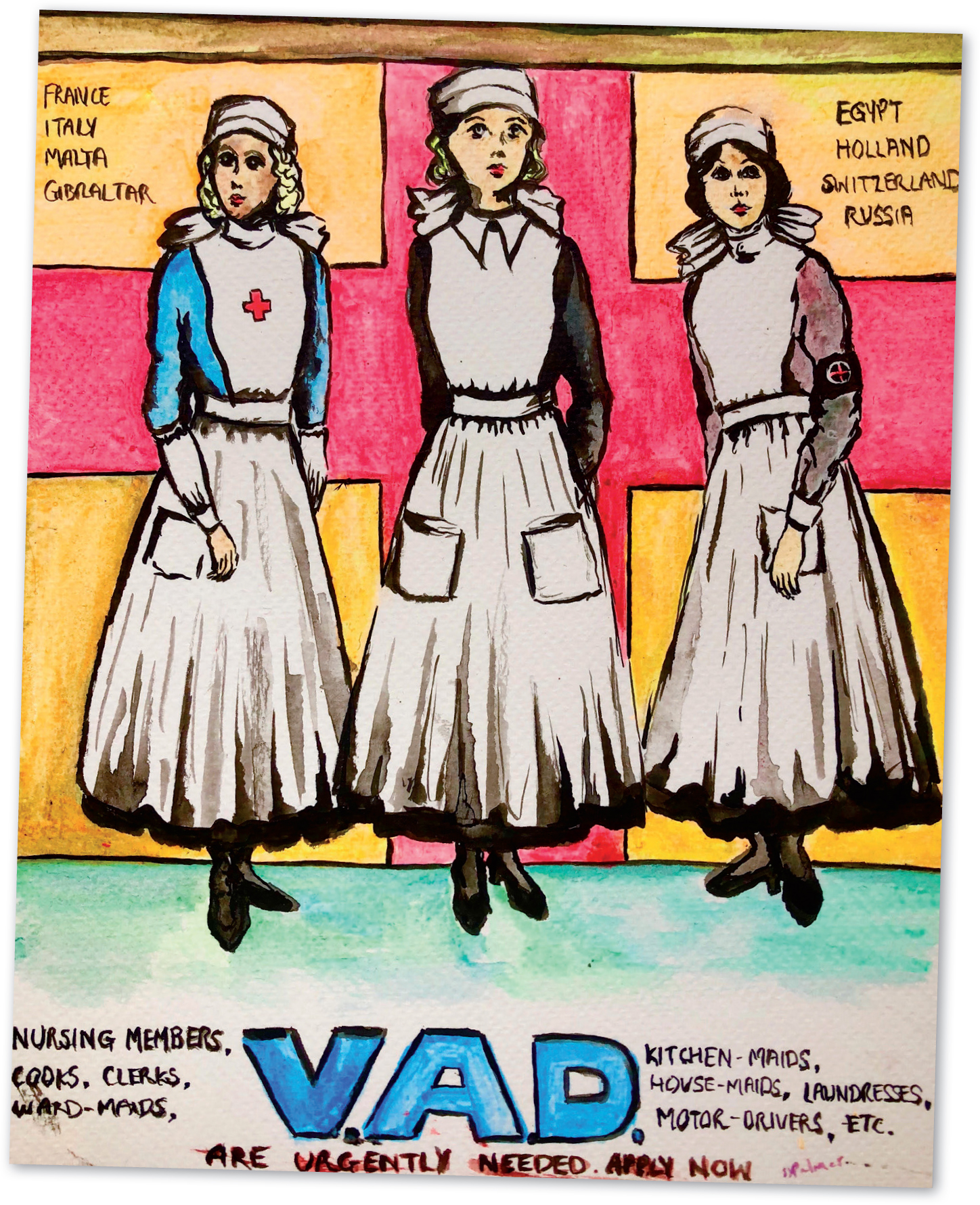During the First World War, 90 000 volunteers worked at home and abroad. They provided a pivotal role in the provision of aid to naval and military forces, providing first aid, ambulance transport, nursing care, and other work such as cooking and cleaning. The Red Cross had their own groups of volunteers named Voluntary Aid Detachments, who came to be known as ‘VADs’.
Transport duties and nursing of the sick and injured were extremely important, as well as the organisation of rest stations, working parties and auxiliary hospitals, which were temporary hospitals set up in hundreds of buildings volunteered by their owners across the UK.
The VADs had to pass exams in order to receive their first aid and home nursing certificates. VADs were both men and women but by 1919, 11 000 men had been released from their roles to take part in active service during the war, and were replaced by women. VADs also took on air raid duties throughout London, with the emblem of the Red Cross providing confidence among crowds gathered across air raid shelters, which included underground stations.
The VADs provided first aid, and carried respirators. They also provided food and supplies for soldiers at railway stations, and those arriving by ambulance train while awaiting transport to local hospitals or other destinations.

The first ever motorised ambulances were used in the First World War. The Times newspaper appealed for ambulance funds in October 1914, and raised enough money to buy 512 vehicles within 3 weeks. Male detachments were mainly in charge of transporting the sick and wounded soldiers from ambulance trains or ships to the local hospital. They also drove patients between hospitals. Male volunteers were also often sent to France to work as ambulance drivers, frequently coming under fire while they transported men away from the front lines. Three hospital trains in France carried 461 844 patients throughout the war.
VADs played an integral role in providing first aid and ambulance transportation. Posters like the above were important in inspiring people to become VADs.

